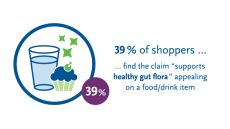Nestle explores thermogel emulsions for flavour, nutrient delivery
A collaboration between scientists at the University of Graz in Austria and the Nestle Research Center (NRC) report that so-called internally self-assembled emulsion droplets (ISAsomes) can be trapped in gels, thereby opening up the ISAsomes as carriers of flavours or functional molecules.
According to their findings, published in the Journal of Colloid and Interface Science, preparation is easy in a fluid state at high temperature, and solidification is achieved by simply cooling.
Hilary Green, PhD, Nestle’s head of R&D communications told FoodNavigator.com: “In this new research, the Nestlé Research Centre and the University of Graz have developed a simplified biological membrane that can potentially be applied in foods for the delivery of flavour, texture and nutrient components,” she said. “In principle, this approach could be applied to any food.”
Dr Green added, however, that the new study, led by Otto Glatter, is exploratory, and that the technology is not currently used in foods.
Hydrogel potential
Interest in such technology, and its potential for food formulation, is growing with previous reports coming from around the world, as well as NRC.
Hydrogels are liquid or semisolid materials composed ofa long-chain molecules cross-linked to one another to create many small empty spaces that can absorb water or other liquids like a sponge.
If the spaces are filled with a bioactive compound, for example, the hydrogel can release it gradually as the structure biodegrades.
New data
Glatter and his co-workers investigated how ISAsomes, made of a monoglyceride mixture (Dimodan, Danisco) in an oil-(limolene, Fluka) in-water emulsion with and a stabilizer (Pluronic F127, BASF), could be entrapped in a hydrogel made of kappa-carrageenan (Fluka).
The emulsions formed contained ISAsomes of different types, said the researchers, such as cubosomes, hexosomes, micellar cubosomes and emulsified microemulsions.
They report that above 60 degrees Celsius, the system is fluid with nano-scale droplets mixed the polymer chains. When the temperature was decreased below 60 C, a gel was formed that physically entrapped the droplets.
By fine tuning the temperature of the phase transformation, the researchers report an alteration of the internal nanostructure of the droplets. These changes include a transformation from emulsified micro-emulsions to micellar cubosomes, they said.
A glimpse of the future
In an email to this website, Dr Green added: “The research provides new concepts for enhancing the functional attributes of food such as flavour, texture and nutrient delivery.
“However, any commercial food application is still a long way off,” she added.
Source: Journal of Colloid and Interface Science2009, Volume 330, Pages 175-179"Internally self-assembled particles entrapped in thermoreversible hydrogels"Authors: S. Guillot, M. Tomsic, L. Sagalowicz, M.E. Leser, O. Glatter























